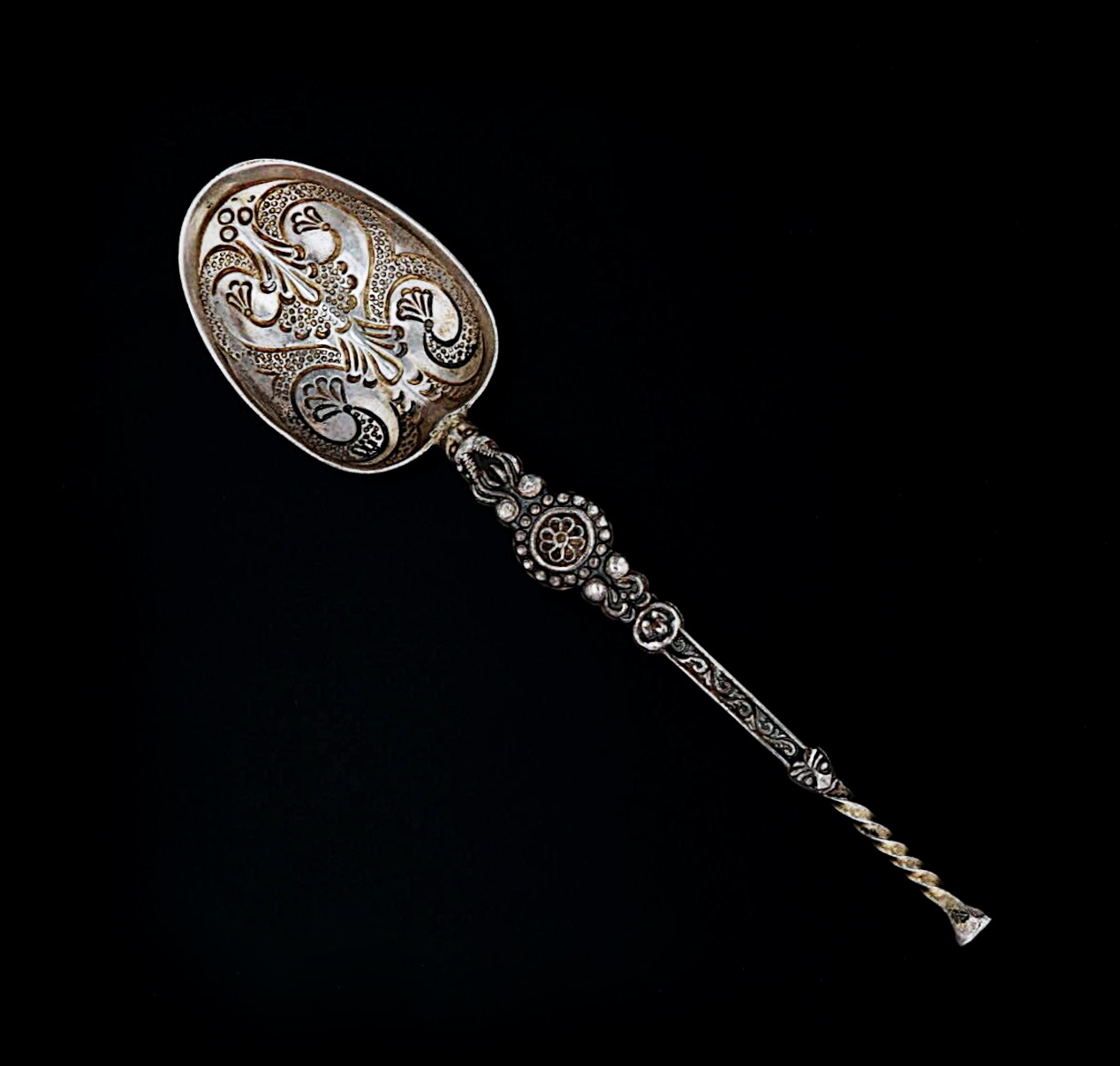

Title: Ornate Floral Demitasse Spoon Sterling Silver Miller Brothers
Shipping: $29.00
Artist: N/A
Period: 19th Century
History: Art
Origin: Northern Europe > England
Condition: Very Good
Item Date: N/A
Item ID: 318
Spectacular 19th-century Hand engraved original handcrafted spoon. Ornate Floral Demitasse Spoon Sterling Silver Miller Brothers Birmingham England. Item: Spoon Brand: Miller Brothers Pattern: Ornate Floral Monogram: No Stamps: M Bros British Hallmarks Metal Content: Sterling Silver Measurements: 3.75" Total Weight: 8.4 Grams Please note there is tarnish to the silver and a bit of surface scratching, due to age.
Ancient Egyptians really respected their spoons / The first remnant of spoons as we know them were found in the ruins of Ancient Egypt, and harken back to 1000 BC. These were ornate, made out of ivory or slate, and believed to be used primarily for ritualistic purposes. The full descriptions and entries relating to silver spoons in the inventories of the royal and other households point to their special value and rarity. The earliest English reference appears to be in a will of 1259. In the wardrobe accounts of Edward I for the year 1300 some gold and silver spoons marked with the fleur-de-lis, the Paris mark, are mentioned. One of the most interesting medieval spoons is the Coronation Spoon used in the anointing of the English and later British sovereign; this 12th-century object is the oldest surviving item in the British royal regalia. A spoon is a utensil consisting of a small shallow bowl (also known as a head), oval or round, at the end of a handle. A type of cutlery (sometimes called flatware in the United States), especially as part of a place setting, it is used primarily for transferring food to the mouth. Spoons are also used in food preparation to measure, mix, stir and toss ingredients and for serving food. Present day spoons are made from metal (notably flat silver or silverware, plated or solid), wood, porcelain or plastic. There are a wide variety of spoons that are made of a variety of materials and by different cultures for many different uses and foods.
Link: https://en.wikipedia.org/wiki/Spoon
Preserved examples of various forms of spoons used by the ancient Egyptians include those composed of ivory, flint, slate and wood; many of them carved with religious symbols. During the Neolithic Ozieri civilization in Sardinia, ceramic ladles and spoons were already in use. In Shang Dynasty China, spoons were made of bone. Early bronze spoons in China were designed with a sharp point, and may have also been used as cutlery. The spoons of the Greeks and Romans were chiefly made of bronze and silver and the handle usually takes the form of a spike or pointed stem. There are many examples in the British Museum from which the forms of the various types can be ascertained, the chief points of difference being found in the junction of the bowl with the handle.
In the early Muslim world, spoons were used for eating soup. Medieval spoons for domestic use were commonly made of cow horn or wood, but brass, pewter, and latten spoons appear to have been common in about the 15th century.
The sets of Apostle Spoons, popular as christening presents in Tudor times, the handles of which terminate in heads or busts of the apostles, are a special form to which antiquarian interest attaches. The earlier English spoon–handles terminate in an acorn, plain knob or a diamond; at the end of the 16th century, the baluster and seal ending becomes common, the bowl being fig–shaped. During The Restoration[citation needed], the handle becomes broad and flat, the bowl is broad and oval and the termination is cut into the shape known as the hind's foot.
In the first quarter of the 18th century, the bowl becomes narrow and elliptical, with a tongue or rat's tail down the back, and the handle is turned up at the end.
The modern form, with the tip of the bowl narrower than the base and the rounded end of the handle turned down, came into use about 1760.